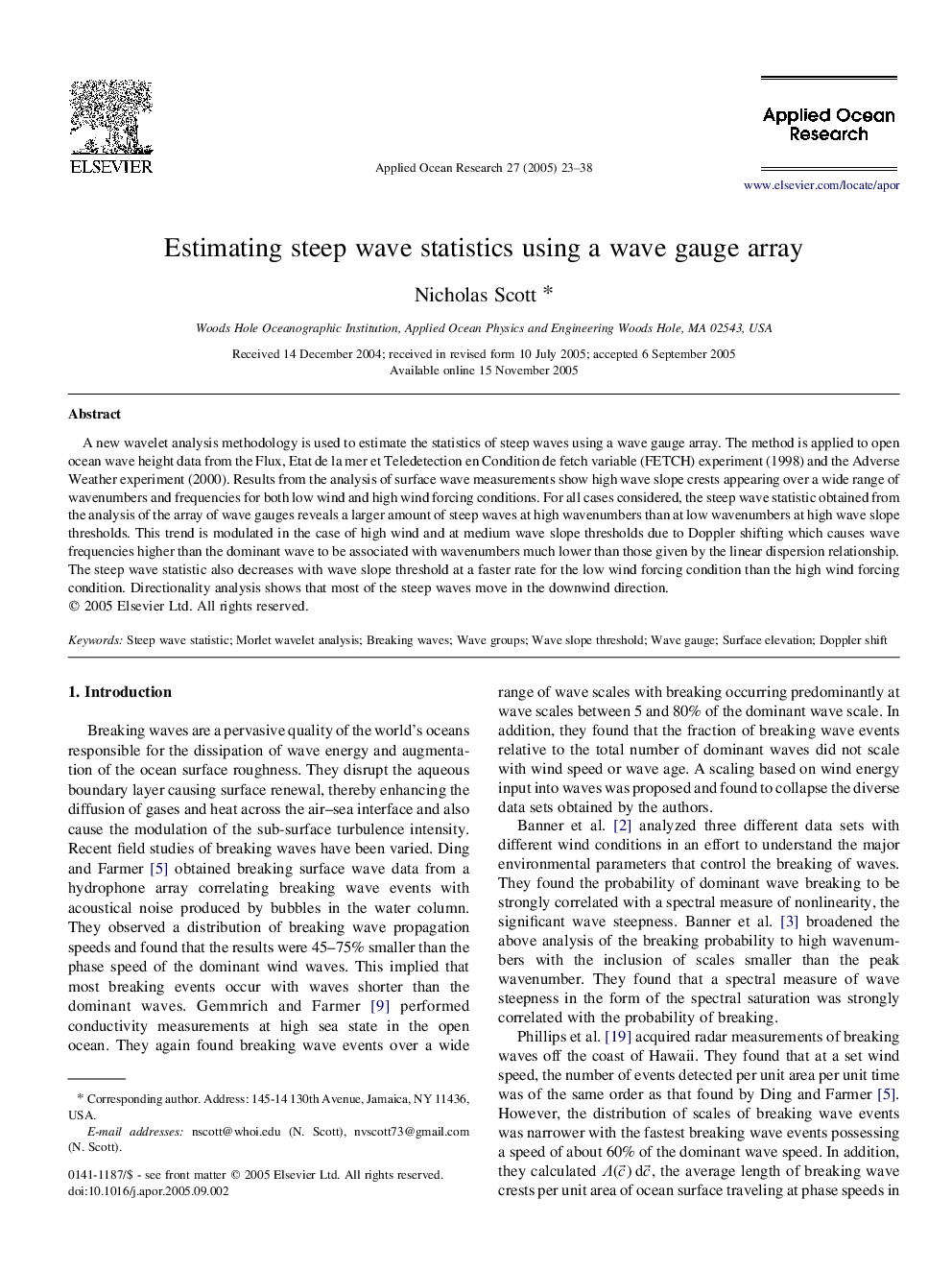| Article ID | Journal | Published Year | Pages | File Type |
|---|---|---|---|---|
| 10681773 | Applied Ocean Research | 2005 | 16 Pages |
Abstract
A new wavelet analysis methodology is used to estimate the statistics of steep waves using a wave gauge array. The method is applied to open ocean wave height data from the Flux, Etat de la mer et Teledetection en Condition de fetch variable (FETCH) experiment (1998) and the Adverse Weather experiment (2000). Results from the analysis of surface wave measurements show high wave slope crests appearing over a wide range of wavenumbers and frequencies for both low wind and high wind forcing conditions. For all cases considered, the steep wave statistic obtained from the analysis of the array of wave gauges reveals a larger amount of steep waves at high wavenumbers than at low wavenumbers at high wave slope thresholds. This trend is modulated in the case of high wind and at medium wave slope thresholds due to Doppler shifting which causes wave frequencies higher than the dominant wave to be associated with wavenumbers much lower than those given by the linear dispersion relationship. The steep wave statistic also decreases with wave slope threshold at a faster rate for the low wind forcing condition than the high wind forcing condition. Directionality analysis shows that most of the steep waves move in the downwind direction.
Related Topics
Physical Sciences and Engineering
Engineering
Ocean Engineering
Authors
Nicholas Scott,
